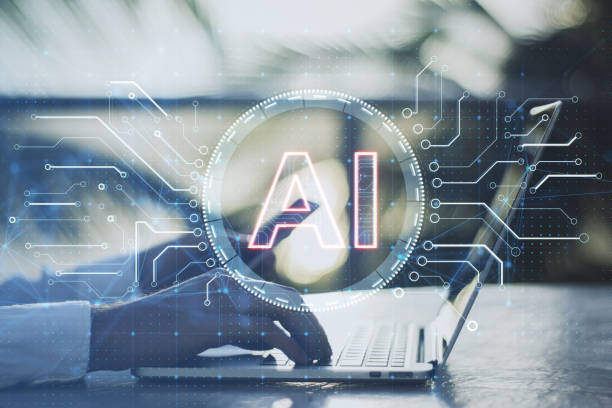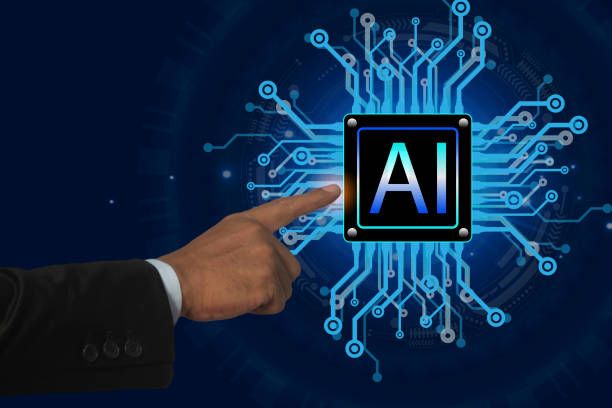Introduction to On-Page SEO and Its Critical Importance
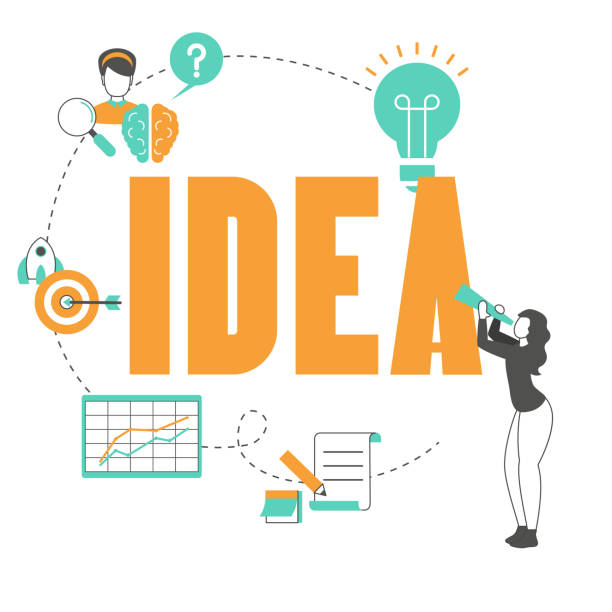
In today’s competitive web world, #OnPageSEO is no longer an option, but an absolute necessity for any website looking to be seen in #SearchResults and attract organic traffic.
In fact, On-Page SEO refers to a set of actions you perform within your website to optimize it for search engines and users.
These actions include optimizing content, site structure, HTML codes, and other on-page elements, all of which help search engines better understand your content and recognize its value.
The importance of On-Page SEO goes beyond merely increasing rankings; strong On-Page SEO also helps improve user experience, reduce bounce rate, and increase conversion rates. Without an effective On-Page SEO strategy, even the best content may get lost among the vast amount of information available on the web.
Search engines like Google constantly update their algorithms to provide users with the most relevant and high-quality results.
These updates emphasize the importance of adhering to On-Page SEO principles, as Google looks for pages that are not only rich in content but also structurally optimized and user-friendly.
Optimizing your site internally signals to search engines that your page is authoritative, relevant, and valuable.
This process involves subtleties that may seem simple at first glance but have a huge impact on your website’s overall performance in search results.
In this comprehensive article, we will delve into each aspect of search engine optimization in the on-page section, guiding you step-by-step toward achieving top rankings.
The ultimate goal is to increase your visibility and attract target audiences, which ultimately leads to the growth of your business.
Does your company’s website create a professional and lasting first impression on potential customers? Rasawb, with its professional corporate website design, not only represents your brand’s credibility but also paves the way for your business growth.
✅ Create a powerful and reliable brand image
✅ Attract target customers and increase sales
⚡ Get free consultation
Keyword Research: The Backbone of On-Page SEO

#KeywordResearch is perhaps the first and most important step in any #SuccessfulSEO strategy, especially in the field of #OnPageSEO.
Without properly understanding the keywords your target audience enters into search engines, any optimization efforts will be fruitless.
Understanding the user intent behind each keyword is of paramount importance.
Is the user looking for information (informational keywords)? Wants to buy a product (commercial keywords)? Or is looking for a specific website (navigational keywords)? Choosing the right keywords means finding phrases that have a reasonable search volume while not having too much competition.
Tools such as Google Keyword Planner, Ahrefs, Semrush, and KWFinder can be of great help in this journey.
By using these tools, you can not only identify relevant keywords but also find out their ranking difficulty and also LSI (Latent Semantic Indexing) keywords that are semantically related.
These LSI keywords help search engines better understand the context of your content and increase your topical authority.
Focusing on Long-Tail keywords can also be very effective. These longer and more specific phrases usually have lower search volume but the user intent behind them is much clearer and they result in higher conversion rates.
For example, instead of “SEO”, use “On-Page SEO tutorial for small businesses”.
After identifying target keywords, the next step is to intelligently distribute them throughout the page content; including the page title, meta description, headings, main text, and even the URL.
But remember to avoid excessive keyword density (Keyword Stuffing), as this action not only harms your SEO but also severely disrupts the user experience.
The goal is for your content to be written naturally and smoothly with relevant keywords, in a way that provides meaning and value to both users and search engines.
This analytical and precise approach to keyword research lays a strong foundation for all your future On-Page SEO efforts.
Essential Elements of On-Page Optimization for On-Page SEO
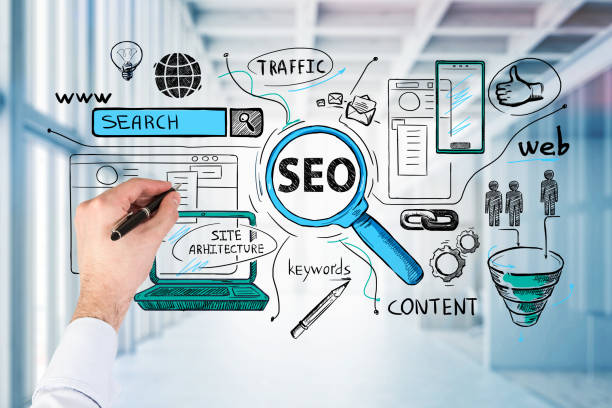
After keyword research, it’s time for its practical implementation across various page elements.
This section of #OnPageSEO examines the technical and content details that directly affect search engines’ understanding of your page and, consequently, its ranking.
Each element plays a specific role in signaling to Google about the relevance and quality of your content.
Title Tag: The page title displayed in the browser tab and search results is one of the most powerful ranking signals.
Be sure to place your primary keyword at the beginning of the title tag and write it attractively and compellingly to encourage user clicks.
The ideal length is usually between 50 and 60 characters.
Meta Description: These short descriptions, which appear below the title in search results, although not directly affecting rankings, play a vital role in click-through rate (CTR).
By using target keywords and creating an appealing and persuasive summary, encourage users to click on your link.
Heading Tags (H1 to H6): Structuring content with headings not only improves readability for users but also helps search engines understand the hierarchy and importance of different sections of the content.
H1 is the main title of the page and should contain the primary keyword.
Other headings (H2, H3, etc.) are used for subdividing topics and incorporating related keywords (LSI Keywords).
URL: A short, descriptive URL containing the main keyword is not only beneficial for On-Page SEO but also makes it easier for users to understand the page’s topic.
Avoid numbers and obscure characters, and use hyphens (-) to separate words.
Keyword Density and Phrase Variation: As mentioned earlier, natural use of keywords throughout the text is essential.
Google seeks content that comprehensively addresses a topic and also uses synonyms and related phrases (LSI) to prevent “keyword stuffing” (excessive repetition of keywords).
This approach makes your content appear attractive and authoritative to both search engines and readers.
These elements are the main pillars of on-page optimization, and adhering to them meticulously can make a significant difference in your website’s On-Page SEO performance.
In the table below, an overview of the most important On-Page elements and their role in On-Page SEO is provided:
| On-Page SEO Element | Description | Role in SEO |
|---|---|---|
| Title Tag | The page title displayed in the browser tab and search results. | Most important ranking signal, the user’s first interaction with content. |
| Meta Description | A short summary of the content that appears below the title in search results. | Indirect impact on ranking, increases click-through rate (CTR). |
| Heading Tags (H1-H6) | Internal headings for structuring and dividing content. | Improves readability, signals to the search engine about section importance, use of secondary keywords. |
| URL | The web address of the page. | Better readability for user and search engine, includes main keyword. |
| Keyword Density | The number of times a keyword is repeated in the text. | Natural usage and avoidance of spam, use of synonyms. |
| Main Page Content | Text, images, video, and other informational components of the page. | The heart of On-Page SEO, must be comprehensive, useful, and in-depth. |
Producing Valuable and Structured Content for On-Page SEO
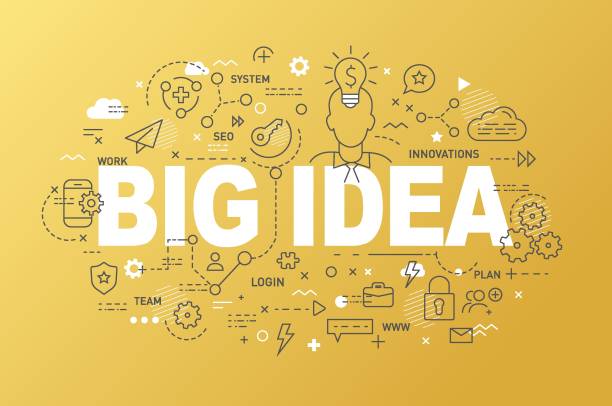
#SEO_optimized_content should not only be optimized for search engines but, perhaps more importantly, should create value for users.
In fact, content quality is the cornerstone of a sustainable and successful #OnPageSEO strategy.
Google increasingly rewards content that fully and comprehensively addresses users’ needs.
This means producing content that is not only informational but also analytical, guiding, and even entertaining, answering users’ questions.
The first step in producing valuable content is a deep understanding of user search intent.
Is the user looking for a quick answer or a comprehensive and specialized guide? Your content must be tailored to this intent.
After that, you must ensure that your content is comprehensive and unique.
Avoid superficial treatment of the topic.
Instead, try to cover all dimensions related to the target keyword and even answer questions that the user might not have thought of yet.
Content structure is equally important.
Correct use of headings (H1, H2, H3, …), short paragraphs, bullet points, lists, and images significantly increases content readability.
Content that is easily scannable and digestible provides a better user experience and keeps users on your page for a longer time, which itself is a positive signal for search engines.
Content length is also an important factor; although there is no “ideal length”, longer and more comprehensive content (usually over 1000 to 1500 words) often tends to rank better because it can cover the topic more deeply and send a stronger signal of authority to search engines.
Adding thought-provoking content that encourages user engagement and reflection, or analytical content that offers new perspectives, can double the value of your content.
Also, regularly updating old content with new information and ensuring the accuracy of materials not only builds user trust but also shows search engines that your website is active and dynamic.
Finally, remember that your content should not only provide accurate and reliable information but also have an appropriate tone and connect with your audience, so that it can stand out in the crowded web world and help strengthen your On-Page SEO.
Does your company’s website perform as befits your brand? In today’s competitive world, your website is your most important online tool. Rasawb, a specialist in professional corporate website design, helps you to:
✅ Attract customer credibility and trust
✅ Convert website visitors into customers
⚡ Get a free consultation!
Image Optimization and Its Impact on On-Page SEO
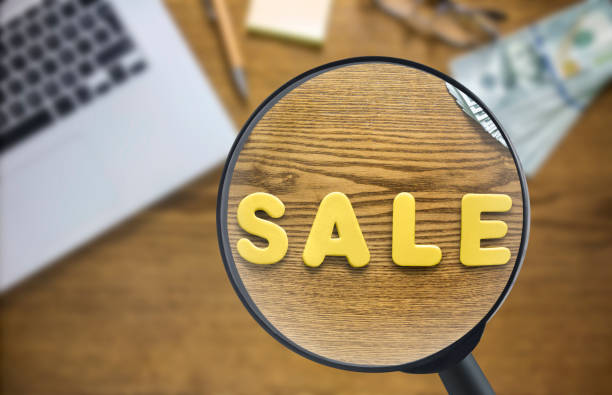
Images play an important role in the visual appeal and message delivery of website content.
However, if not optimized correctly, they can harm #OnPageSEO instead of helping it, especially in terms of page loading speed.
#Image_optimization includes several key aspects, all of which contribute to improving site performance in search results.
The first step is image compression and resizing.
Large images can significantly reduce page loading speed, which is a key Google ranking factor and a major cause of user bounce rate.
Use online tools or photo editing software to reduce image file size without significant loss of quality.
Also, adjust image dimensions according to their display area on the page.
There’s no need to upload a 4000-pixel image in a space that’s only 800 pixels wide.
Newer formats like WebP can significantly reduce file size while maintaining high quality.
The second important aspect is using appropriate alternative text (Alt Text).
Alt Text is a text description of an image that is displayed when the image fails to load or is read aloud for users who use screen readers (e.g., visually impaired or blind individuals).
Alt Text also helps search engines understand the image content, as they are unable to “see” images.
Ensure your Alt Text is descriptive, concise, and includes keywords relevant to the content, but avoid keyword stuffing.
Image file names also matter.
Instead of generic names like “IMG_1234.jpg”, use descriptive names containing keywords (e.g., “on-page-seo-optimization.jpg”).
This helps search engines rank your images in image search results as well.
Using Lazy Loading for images, meaning loading images only when the user scrolls to them, can significantly improve initial page loading speed.
This technique is particularly useful for pages with many images.
All these actions not only help improve On-Page SEO but also enhance the user experience, ultimately leading to longer user retention on the site and reduced bounce rates.
Internal Linking Strategy for SEO Enhancement
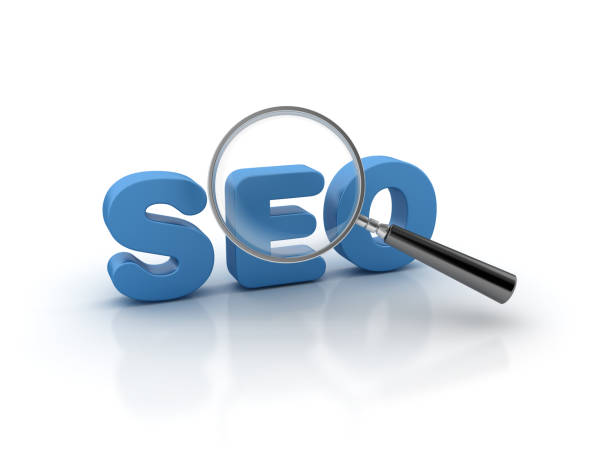
Internal Linking is one of the most powerful yet often overlooked tools in #OnPageSEO.
#InternalLink refers to links that point from one page on your website to another page on the same website.
These links play a vital role in guiding users and search engines throughout your site, distributing Page Authority, and defining your website’s structure and hierarchy.
The first and most important benefit of internal linking is helping search engines discover new pages and understand your site’s structure.
Google’s crawlers find different pages of your website by following links.
The stronger and more logical your internal links are, the easier it is for crawlers to index your content and pass authority (Link Juice) throughout your site.
This “link flow” helps deeper or less-linked pages gain better rankings.
The second aspect is improving user experience.
Relevant internal links enable users to easily find more information about their topic of interest.
This not only keeps users on your site longer (reducing bounce rate) but also increases conversion rates because users can easily access your product or service pages.
When creating internal links, pay attention to a few points:
- Use descriptive and keyword-rich Anchor Text: Anchor text is the clickable text of a link.
Using relevant keywords in anchor text helps search engines better understand the topic of the linked page.
For example, instead of “click here”, use “comprehensive guide to On-Page SEO”. - Place internal links naturally within the text: Links should be placed where they seem logical and useful and contribute to the reader’s experience, not merely added for SEO purposes.
- Link more to more important pages: Homepages, key service or product pages, and comprehensive (pillar) pages should receive more links from other pages on the site to gain more authority.
- Create a logical site structure (Silod Structure): Organize related content into thematic categories or “silos” and link pages within each silo to each other.
This helps search engines clearly understand the main topic of each section.
By implementing a smart internal linking strategy, you not only help #ImproveSiteRanking but also significantly enhance the user experience.
Technical Aspects of On-Page SEO and User Experience Improvement

While content and keywords form the core of #OnPageSEO, technical aspects are equally important for ranking success.
#TechnicalSEO includes backend optimizations that directly affect the crawlability, indexability, and understanding of website content by search engines.
Ignoring these can render your content efforts ineffective.
Page Speed: This is one of the most important technical factors.
Modern users expect websites to load quickly, and Google also considers speed as a crucial ranking factor.
Tools such as Google PageSpeed Insights, GTmetrix, and Pingdom Tools can help you identify speed issues and provide solutions for improvement.
Image compression, reduction of CSS and JavaScript codes, use of browser caching, and choosing appropriate hosting are among the effective measures in this regard.
Mobile-Friendliness: Given the significant increase in mobile usage for internet access, Google employs a Mobile-First Indexing approach, meaning it prioritizes the mobile version of your website for indexing and ranking.
Responsive Design, which automatically adapts your site to the user’s screen size, is the best solution.
You can check your site’s compatibility with Google’s Mobile-Friendly Test tool.
Structured Data / Schema Markup: Schema Markup is code you add to your website to help search engines better understand your content.
This data can add extra information (such as star ratings for products, event times, or business contact information) to search results and lead to Rich Snippets, which significantly increase your click-through rate (CTR).
Robots.txt file and XML Sitemap: The robots.txt file tells search engine crawlers which parts of your site they can crawl and which they cannot.
The XML sitemap also provides search engines with a list of all important URLs on your website to ensure all pages are correctly indexed.
SSL Certificate (HTTPS): Using the HTTPS protocol not only ensures the security of the site and user information but is also considered a minor ranking factor.
Google has explicitly stated that it prefers websites with HTTPS.
Paying attention to these technical aspects is the cornerstone of strong #OnPageSEO and directly affects how search engines interact with your site, and consequently, your final ranking.
In the table below, an overview of the most important technical aspects of On-Page SEO and their effects on site performance is provided:
| Technical Aspect | Description | Impact on SEO and UX |
|---|---|---|
| Site Loading Speed | The time it takes for the content of a page to be fully displayed. | Key ranking factor, reduces bounce rate, improves user experience. |
| Mobile Compatibility | Ability for the site to display correctly and function well on mobile devices. | Essential for Mobile-First Indexing, improves accessibility and UX. |
| Structured Data (Schema) | Specific coding to help search engines understand content. | Creates Rich Snippets, increases CTR in search results. |
| SSL Certificate (HTTPS) | Secure Hypertext Transfer Protocol for data encryption. | Minor ranking factor, increases user trust and security. |
| Robots.txt file | A file that instructs crawlers which sections to crawl or ignore. | Manages search engine crawling, prevents unnecessary pages from being indexed. |
| XML Sitemap | A file that provides search engines with a list of all important URLs on the site. | Helps discover and index all important pages. |
User Experience (UX) and its Synergy with On-Page SEO

In recent years, the convergence between #SEO and #UserExperience (UX) has become increasingly apparent.
Google and other search engines are increasingly focusing on factors that indicate user satisfaction with a website.
This means that successful #OnPageSEO is no longer just about optimizing for algorithms, but also about creating an excellent user experience.
When users enjoy your website, they send positive signals to search engines, which in turn can help improve your rankings.
Some of the most important UX factors affecting On-Page SEO include:
- Bounce Rate: This metric indicates what percentage of users leave a page immediately after entering it, without interacting with it.
A high bounce rate can be an indication of irrelevant content, poor design, or slow loading speed, all of which send negative signals to Google.
Improving content quality, clear calls to action, and user-friendly design can reduce bounce rate. - Dwell Time: This metric indicates the amount of time a user spends on your page after clicking a search result.
Longer dwell time signals to Google that your content is valuable and engaging and addresses the user’s search intent.
In-depth and comprehensive content, videos, engaging images, and user-friendly design help increase Dwell Time. - Ease of Navigation: A logical website structure and clear navigation menus help users easily find what they are looking for.
Complex or confusing navigation can frustrate users and cause them to leave your site.
Correct internal linking, use of breadcrumbs, and strong internal search improve the navigation experience. - Content Readability: As mentioned in the content section, using short paragraphs, headings, lists, and images makes content easier to read.
Content that is difficult to read tires users and causes them to leave the site.
Ultimately, the goal of #OnPageSEO and UX is the same: to provide the best possible experience for the user.
By focusing on this synergy, you can not only achieve better rankings in search engines but also improve customer loyalty and conversion rates, which will contribute to your business’s sustainable growth in the long run.
A website optimized for SEO should naturally also be a website optimized for the user.
Did you know that 94% of users’ first impressions of a business are related to its website design? With professional corporate website design by **Rasawb**, turn this initial impression into an opportunity for growth.
✅ Attract more customers and increase sales
✅ Build credibility and trust in the audience’s eyes⚡ Get a free website design consultation!
Tools and On-Page SEO Performance Monitoring

To ensure the success of the #OnPageSEO strategy, continuous monitoring and performance tracking are essential.
Fortunately, powerful tools are available to help you monitor your site’s SEO status, identify problems, and discover opportunities for improvement.
Using these tools is an integral part of a #ModernSEO and data-driven strategy.
Google Search Console (GSC): This free and extremely vital tool from Google is your bridge to the Google search engine.
GSC allows you to see how your site appears in search results.
You can check keyword performance, crawl errors, indexing issues, mobile-friendliness status, and even internal and external links of your site.
This tool is essential for any webmaster looking to improve On-Page SEO.
Google Analytics (GA): Another free tool from Google that provides comprehensive information about your website traffic.
You can see where users come from, how long they stay on your site, which pages they visit, and what your bounce rate is.
By analyzing this data, you can identify the strengths and weaknesses of your content and improve your #ContentSEO strategy.
Keyword Research and Competitor Analysis Tools: Tools like Semrush, Ahrefs, and Moz (or similar Iranian tools) offer capabilities far beyond mere keyword research.
They can help you analyze backlinks (off-page SEO), examine your keyword rankings and those of your competitors, discover content opportunities, and identify technical On-Page SEO issues.
These tools are usually paid but offer deep analytical capabilities.
Site Speed Testing Tools: As mentioned in previous sections, Google PageSpeed Insights, GTmetrix, and Pingdom Tools are crucial for checking your page loading speed and providing suggestions for performance improvement.
By regularly using these tools and correctly interpreting the data, you can not only resolve existing problems in your #OnPageSEO but also identify new opportunities for growth and advancement in the digital space, keeping your website always on the path of optimization.
Continuous monitoring allows you to keep pace with changes in search engine algorithms and user behaviors, maintaining your competitive advantage.
Common Mistakes and Future Trends in On-Page SEO

The world of #SEO is constantly changing and evolving, and #OnPageSEO is no exception.
To maintain and improve site rankings, one must not only adhere to basic principles but also avoid common mistakes and keep up with future trends.
In this section, we will discuss some avoidable mistakes and future directions of On-Page SEO.
Common Mistakes in On-Page SEO:
- Keyword Stuffing: Excessive repetition of keywords with the intention of deceiving search engines, which not only doesn’t help but leads to penalties from Google.
- Duplicate or Low-Quality Content: Publishing content that is copied or lacks sufficient value for the user.
Google rewards original, comprehensive, and unique content. - Ignoring Site Speed and Mobile-Friendliness: As mentioned earlier, these two factors are crucial, and ignoring them can seriously harm your rankings.
- Not Using Meta Descriptions or Using Duplicate/Weak Titles: These elements are important opportunities to attract user clicks in search results.
- Weak or Insufficient Internal Linking: Failure to create a logical internal linking structure can lead to crawling issues and improper distribution of page authority.
- Ignoring User Intent: Producing content without a proper understanding of what the user is searching for leads to irrelevant content and a high bounce rate.
Future Trends in On-Page SEO:
- Voice Search SEO: With the increasing use of voice assistants, optimizing content for voice searches, which are often longer and more conversational, is becoming increasingly important.
- Focus on Complex and Experience-Oriented Search Intent: Google is increasingly seeking a deeper understanding of user needs.
Content that goes beyond simple keywords and answers more complex questions will be more valuable. - Artificial Intelligence (AI) and Machine Learning: Google’s algorithms like RankBrain and BERT are increasingly using AI to better understand natural language and make results more relevant.
This means a greater emphasis on high-quality, natural, and meaningful content. - Page Experience: Core Web Vitals (including loading speed, interactivity, and visual stability) have become official ranking factors.
Optimizing these metrics is essential for future #OnPageSEO. - E-A-T (Expertise, Authoritativeness, Trustworthiness): Content expertise, authority, and trustworthiness remain a critical factor.
Content production by experts, credible references, and building high-quality backlinks (which complements On-Page SEO) are essential for demonstrating credibility.
By being aware of these mistakes and keeping up with new trends, you can keep your #OnPageSEO strategy on the right track and achieve sustainable success in the digital world.
This path is a continuous journey, not a destination.
Frequently Asked Questions
| Question | Answer |
|---|---|
| What is On-Page SEO? | It refers to a set of actions performed within a website to improve its ranking in search engines. |
| Why is On-Page SEO important? | Because it helps search engines better understand your site’s content and structure and improves user experience. |
| What are the most important On-Page SEO elements? | Title and meta descriptions, keywords, URL structure, quality content, image optimization, internal linking, and site speed. |
| How to optimize Title Tag and Meta Description? | The title should include the main keyword and be engaging, and the meta description should be a persuasive summary of the content with relevant keywords. |
| What is the role of keywords in On-Page SEO? | Keywords tell search engines what the page content is about and should be used naturally and intelligently within the text. |
| How is image optimization for On-Page SEO done? | By compressing size, using descriptive file names, and filling the Alt tag with relevant descriptions and keywords. |
| What is Internal Linking and what is its use? | It’s connecting different pages of a site to each other. This helps distribute page authority and improve search engine crawling. |
| What is the importance of site loading speed in On-Page SEO? | High speed improves user experience and is one of the important ranking factors for search engines like Google. |
| What impact does site responsiveness (Mobile-Friendliness) have on On-Page SEO? | Given the increase in mobile users, responsiveness is essential for providing a suitable user experience across all devices and for Google’s mobile-first indexing priority. |
| What are the important content-related factors in On-Page SEO? | Originality, quality, comprehensiveness, readability, proper use of headings (H1, H2,…), and regular content updates. |
And other advertising services of Rasa Web Advertising Agency
Smart Custom Software: Revolutionize user interaction with precise audience targeting.
Smart Google Ads: A fast and efficient solution to increase click-through rates by focusing on real data utilization.
Smart UI/UX: Designed for businesses seeking to increase click-through rates through marketing automation.
Smart Advertorials: An innovative service for increasing digital branding through custom programming.
Smart Website Development: A specialized service for online growth based on custom programming.
And over hundreds of other services in the field of internet advertising, advertising consultation, and organizational solutions.
Internet Advertising | Advertising Strategy | Advertorials
Sources
What is On-Page SEO?
On-Page SEO
Comprehensive Guide to On-Page SEO
On-Page SEO
? Are you ready to transform your business in the digital world? At Rasawb Afarin Digital Marketing Agency, with our expertise in user-friendly website design and implementing comprehensive digital strategies, we help you establish a powerful and effective online presence. From SEO and online advertising to social media management, we are your digital partner for achieving your goals.
📍 Tehran, Mirdamad Street, next to Bank Markazi, Southern Kazeroon Alley, Ramin Alley, No. 6


